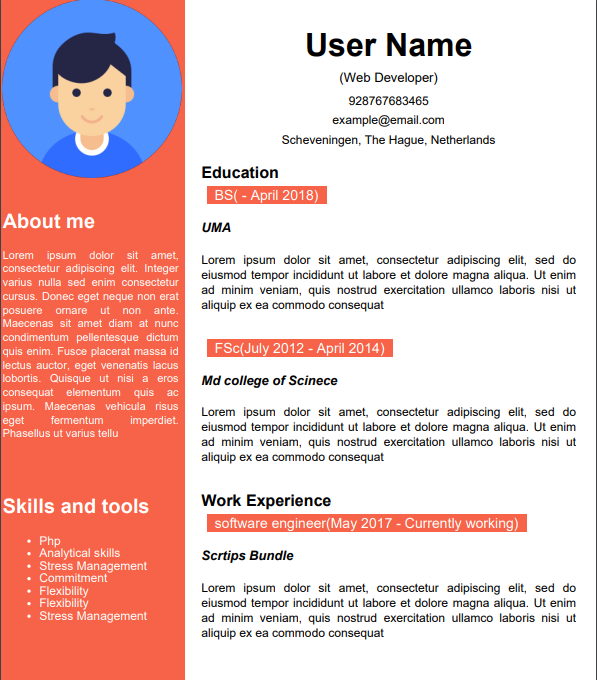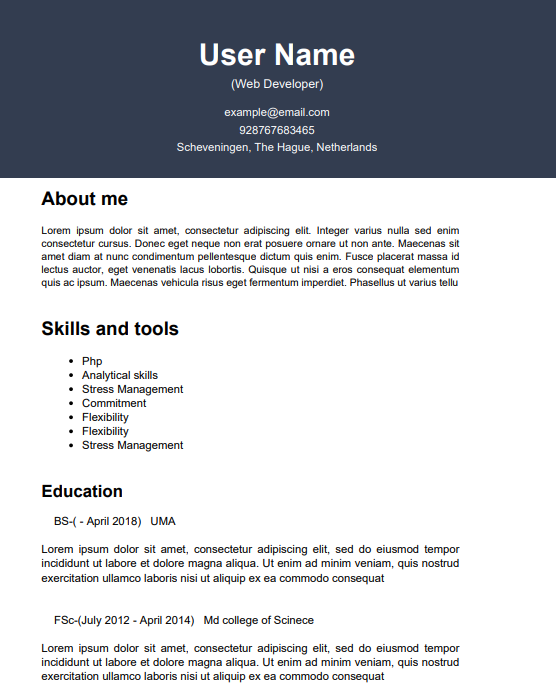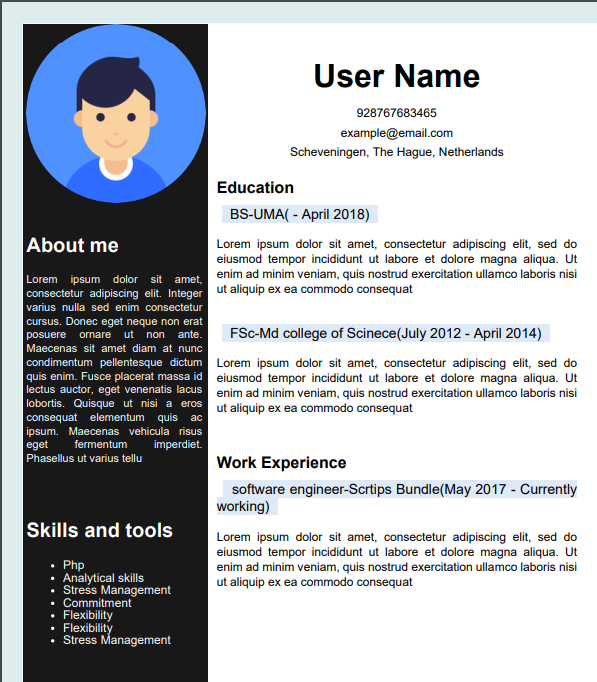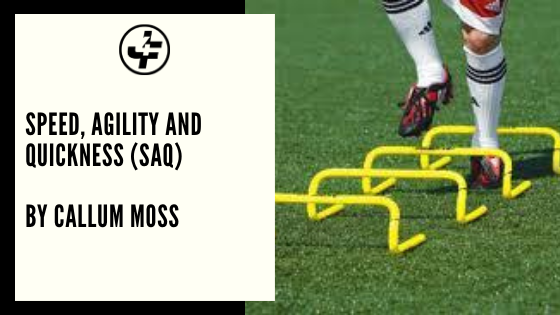Speed, Agility and Quickness (SAQ)
Speed, Agility and Quickness (SAQ) training is a method of training that focuses on explosive movement within football gameplay. Specifically, we aim to improve running mechanics, movement efficiency, coordination and reactions.
We are essentially improving the recruitment of muscle fibres neurologically to introduce a better “firing frequency”. This means that our muscles will be able to work more quickly in a short space of time (hence the explosive aspect) which correlates to short, sharp movements.
SAQ aims to improve this but this is generic as there are a multitude of biomechanics we can look at and how they all improve speed within the body.
What I have done is present a basic SAQ session based on the fundamentals they promote.
SAQ training won’t be picked up overnight. In fact it does take a while to get used to it. As I have said, every footballer is different fitness-wise.
Up until 8-9 years of age, children have only just mastered their own fundamental movements which is why football fitness for them at a young age isn’t completely advisable.
On that subject, children will normally be able to achieve a sense of manipulation from the age of 2-3 onwards, meaning they start to perform basic tasks.
Sport training such as SAQ may manipulate this but bare in mind we are affecting motor development with SAQ training and its best to do so once manipulation and stabilisation from the child’s perspective has been achieved.
So onto the session at hand. If we look at the drill on the far right, we see what has been popularly called a “straight line drill”.
Now I have mentioned previously that warm ups should involve a light jog for a temperature, blood flow and blood to the muscle increase. This drill aims to perfect the technique of the running we perform. So what are we looking for in terms of technique? We want to see:
Rhythmical arm movements – The arms working in correlation with the legs.
The alternation of the leg making ground contact – The leg that makes contact with the ground should see a full extension. We want appropriate technique when during a sprint we have fluidity from the right leg to the left leg and vice versa.
The ankle – We want a suitable ankle position to decrease the load on the foot.
The action of the leg muscles – We want a full extension, of the hip mainly and this drives the leg forward.
So on analysing these aspects, this promotes perfecting technique that replicates running in a straight line. We want the CNS to get used to developing a firing frequency of motor units towards the muscles and straight line drills help form the foundations of more complex movements.
We are also developing our body in basic terms to be more quick with our movements, so this is where the speed aspect of SAQ comes in. We don’t go straight into a run, but we start off with a walk, aiming to replicate the technical aspects of the running technique. We are stabilising our body at this moment in time and building a suitable centre of gravity to work on.
When we run with SAQ we want to do so at roughly a 45 degree angle lunging forwards. We are looking for appropriate positioning of the ankle, understanding our personal strides for each full extension of the hips as well as the transition from the legs making ground contact (each completed extension to ground contact is classed as a stride).
We can progress this to skipping, same techniques except we are now enforcing a drive off the legs to add more realism as well as more stress on the lower leg muscles.
On this drill still we can move to a favourite drill of mine, which is feet to the glutes one by one. This will help our quads and hamstrings dynamically for the running technique and this will strengthen these muscles for explosiveness which is a key aspect of SAQ training within football fitness.
When we add another progression of pushing our knees up to our chest, we are improving the explosiveness of the hip extension leading to the leg drive. These both improve the transition of the strides for the running technique.
Its important to remember that doing all of these progressions within straight line drills that improve our speed foundations, our arms must be in a rhythmical movement.
In other words the leg making ground contact in a stride, the opposite arm is the one that should be extended forward. This helps our coordination and helps our centre of gravity become stable and straight.
Now we can move onto the second drill which are hurdles. Marked on the diagram, this is the drill on the left side on top of the ladder drill. This develops the speed of the transition of the legs making ground contact.
The quicker the transition, the faster we go in general. Building on the foundations of speed from a mechanical perspective, we can now build on that. Hurdles provide a barrier, so the space in between each hurdle must be carefully considered.
Too close together isn’t great for an inexperienced runner because their transition will be slower. Because we are manipulating the transition of the legs making ground contact, we are therefore improving strides. But I wouldn’t go straight into doing both legs at once.
I would use asymmetric loading (working just one leg) so each leg gets used to performing challenged strides with limited time for transition. I would start off at about 2 feet in between each drill. Do a couple with the right leg, then the left leg (the non-working leg should be outside of the hurdles) asymmetrically and then we can perform the drill symmetrically at a slow pace.
This can start off slowly and once that has been mastered, we can challenge the transition of the legs even further. This can start from one leg in between each hurdle to having both legs in between each hurdle before going to the next one.
Bare in mind we always want to challenge the body to optimise the firing frequency from the CNS with motor units to the working muscles.
Now we can move to the ladder drills. The ladder drills help provide balance and promote equality of strength across the body. This promotion of balance helps stabilise the hips, allowing them to deal with more complex movements such as hip rotations.
Hip rotations are integral to agility based drills. Ladder drills help control our footwork. When we control our footwork, we are controlling our body coordination more efficiently. Ladder drills in terms of progression work similarly to hurdle drills.
We start with asymmetric loading before moving to a slow symmetric load through the ladder and then we can move onto putting one foot in between each part of the ladder to putting both feet in each part of the ladder. We can add further progressions such as putting a cone in certain parts of the ladder so our body has to side-step away from this barrier or we can promote a jump.
We can perform the drill horizontally with a leading hip (so a side-step). I have added another ladder just for creativity more than anything as we can use one type of progression in one ladder and we can demand something different in the next one.
What we have to understand is that we have to know the limitations of the athlete before we start getting complex and challenging them further. Only do so when their body allows them to perform such movements. Also, keep in mind the arm movements throughout this for rhythmical movement.
The drill with the circle is an extension on foot balance except we may perform more lateral foot movements to further challenge our centre of gravity and our balance. We would start off with basic side to side movements to introduce the movement at a fast intensity.
Then we would go side to side followed by a one two forward and back to side to side. Then the coach can get a bit more creative to continually challenge the player.
Now we have started to add a bit of agility towards the end of the speed based drills we can now do some agility based drills on an exclusive level (they primarily focus on agility).
The speed drills have set up the speed to which our body can perform these drills at. The drill at the top left is a basic run up to a cone followed by a 45 degree angle hip rotation to the next cone and so forth. We should perform the rotation on the outside of the cone so we can get a more fluid turn in without a barrier.
Once this has been mastered, we can get creative and enforce different changes of direction at different angles because ultimately changes of direction are what we want. This is what agility is, moving as quickly as possible on the turn. Then I get a bit more realistic. The poles introduce change of direction for the whole body. This introduces a dip of the shoulder which is a further challenge of change of direction with full body motion.
The last drill at the top is a mixture. This is performing a bit of everything. We can do some hurdle based movements to help the transition phase of the leg alternation and this is followed by a 90 degree angle hip rotation transitioned into a sprint.
This again can be further developed based on the level of the players you are working with. Ultimately in a game environment, we are psychologically reacting to stimuli that is unpredictable and instinctive.
By challenging the body with different movements with different intervals of intensity, we are better equipping them to deal with changes of speed and the intensity of that speed with drills such as this. Agility has been added here with a hip rotation. Better stabilisation of the hips will allow better change of direction.
That’s a basic overview of an SAQ session. The quickness aspect is how quickly we perform speed and agility more or less. We want to build up quickness so we slowly but constantly improve the firing frequency from the CNS to the working muscles.
This has been mainly in this article a brief overview of developing technique before we can start getting a bit more creative with our drill selection and further challenge the players.




